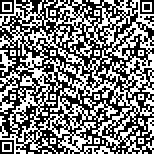本文已被:浏览 134次 下载 120次
Received:June 29, 2023 Published Online:January 20, 2024
Received:June 29, 2023 Published Online:January 20, 2024
中文摘要: 目的 通过多个数据库资料结合临床样本分析喉鳞状细胞癌(鳞癌)患者中肿瘤坏死因子受体超家族成员(TNFRSF)4表达水平的变化,研究TNFRSF4在喉鳞癌发生发展中的作用。
方法 根据高通量基因表达(GEO)数据库和癌症基因组图谱(TCGA)数据库转录组表达谱数据筛选出差异表达的基因,结合基因表达谱数据动态分析 (GEPIA)数据库对差异基因TNFRSF4进行表达水平预测和生存分析;同时通过3例患者的喉鳞癌组织与癌旁组织标本进行qRT-PCR和Western blot验证,基于TCGA的临床数据绘制K-M生存曲线图并进行Cox回归分析。采用基因集富集分析探究与TNFRSF4在喉鳞癌中作用有关的信号通路。
结果 数据库和临床样本中,喉鳞癌组中TNFRSF4的表达高于正常组(P<0.05),且TNFRSF4高表达组的生存率高于TNFRSF4低表达组(P<0.01)。多因素的Cox回归分析显示,TNFRSF4表达水平(HR:0.430,95%CI:0.229~0.806,P=0.009)、性别(HR:0.424,95%CI:0.204~0.882,P=0.022)、淋巴结分期(HR:2.010, 95%CI: 1.055~3.831, P=0.034)和远处转移 (HR: 3.706, 95%CI: 1.152~11.922, P=0.028)四个因素共同对患者的总生存时间产生影响。基因集富集分析的结果显示,与TNFRSF4表达最显著相关的信号通路有细胞黏附分子、JAK-STAT信号通路、T细胞受体信号通路、B细胞受体信号通路、原发性免疫缺陷和自身免疫性甲状腺疾病。
结论 TNFRSF4高表达可能是喉鳞癌患者预后良好的生物标志物。
Abstract:Objective To analyze the changes in tumor necrosis factor receptor superfamily (TNFRSF) 4 expression levels in laryngeal squamous cell carcinoma (LSCC) patients through multiple database data combined with clinical samples, and to study the role of TNFRSF4 in the occurrence and development of LSCC.
Methods Based on Gene Expession Omnibus (GEO) database and The Cancer Genome Atlas (TCGA) database, the differentially expressed gene was screened out. The expression level prediction and survival analysis of TNFRSF4 were performed using Gene Expression Profiling Interactive Analysis (GEPIA) database. Western blot and qRT-PCR were performed on LSCC and adjacent tissue samples from three patients. K-M curve was drawn based on TCGA clinical data, and Cox regression analysis was performed. Finally, gene set enrichment analysis was performed to explore signaling pathways related to the role of TNFRSF4 in LSCC.
Results In the database and clinical samples, the expression of TNFRSF4 in the LSCC group was higher than that in the normal group (P<0.05), and the survival rate of the high TNFRSF4 expression group was higher than that of the low TNFRSF4 expression group (P<0.01). Multivariate Cox regression analysis showed that the expression level of TNFRSF4 (HR: 0.430, 95%CI: 0.229-0.806, P=0.009), gender (HR: 0.424, 95%CI: 0.204-0.882, P=0.022), lymph node staging (HR:2.010, 95%CI: 1.055-3.831, P=0.034) and distant metastasis (HR: 3.706, 95%CI: 1.152-11.922, P=0.028) collectively affect the overall survival time of patients. The results of gene set enrichment analysis showed that the most significantly correlated signaling pathways with TNFRSF4 expression included cell adhesion molecule, JAK-STAT signaling pathway, T cell receptor signaling pathway, B cell receptor signaling pathway, primary immunodeficiency, and autoimmune thyroid disease.
Conclusion High expression of TNFRSF4 may be a biomarker for good prognosis of patients with LSCC.
keywords: Laryngeal squamous cell carcinoma Tumor necrosis factor receptor superfamily 4 The Cancer Genome Atlas database Gene Expession Omnibus database Gene Expression Profiling Interactive Analysis database Prognosis
文章编号: 中图分类号:R739.65 文献标志码:A
基金项目:温州市科技局项目(Y20220853)
引用文本:
